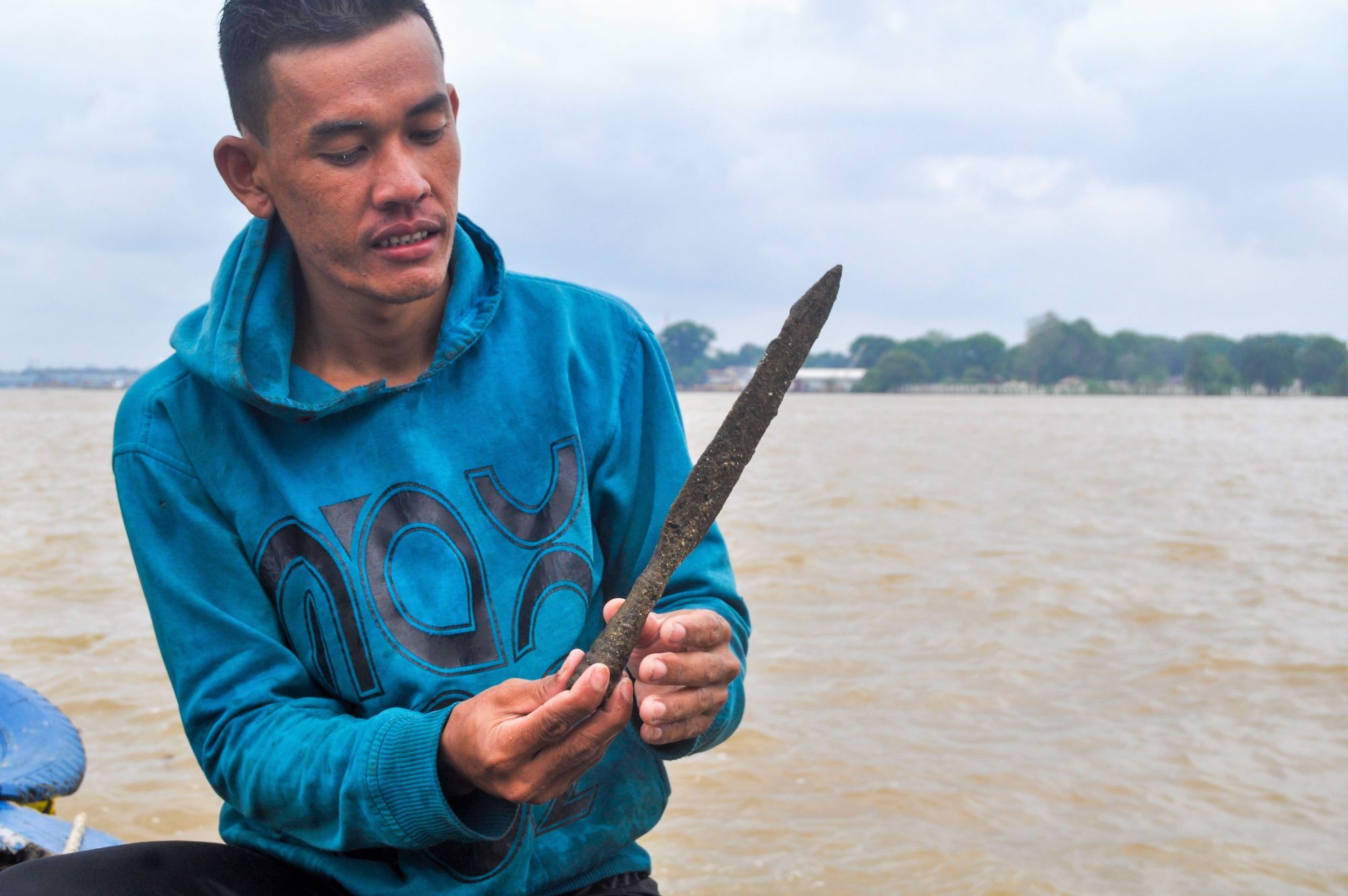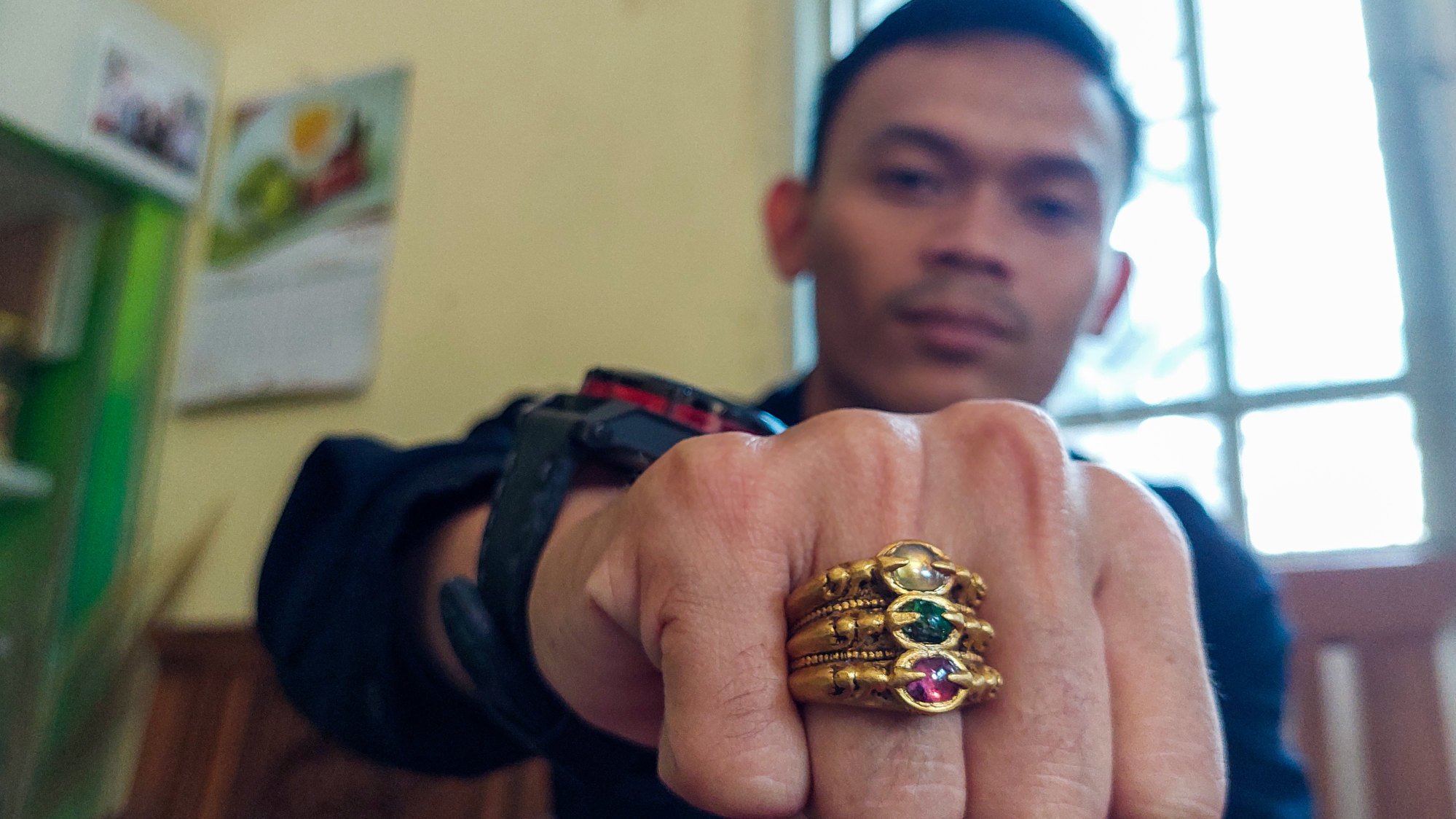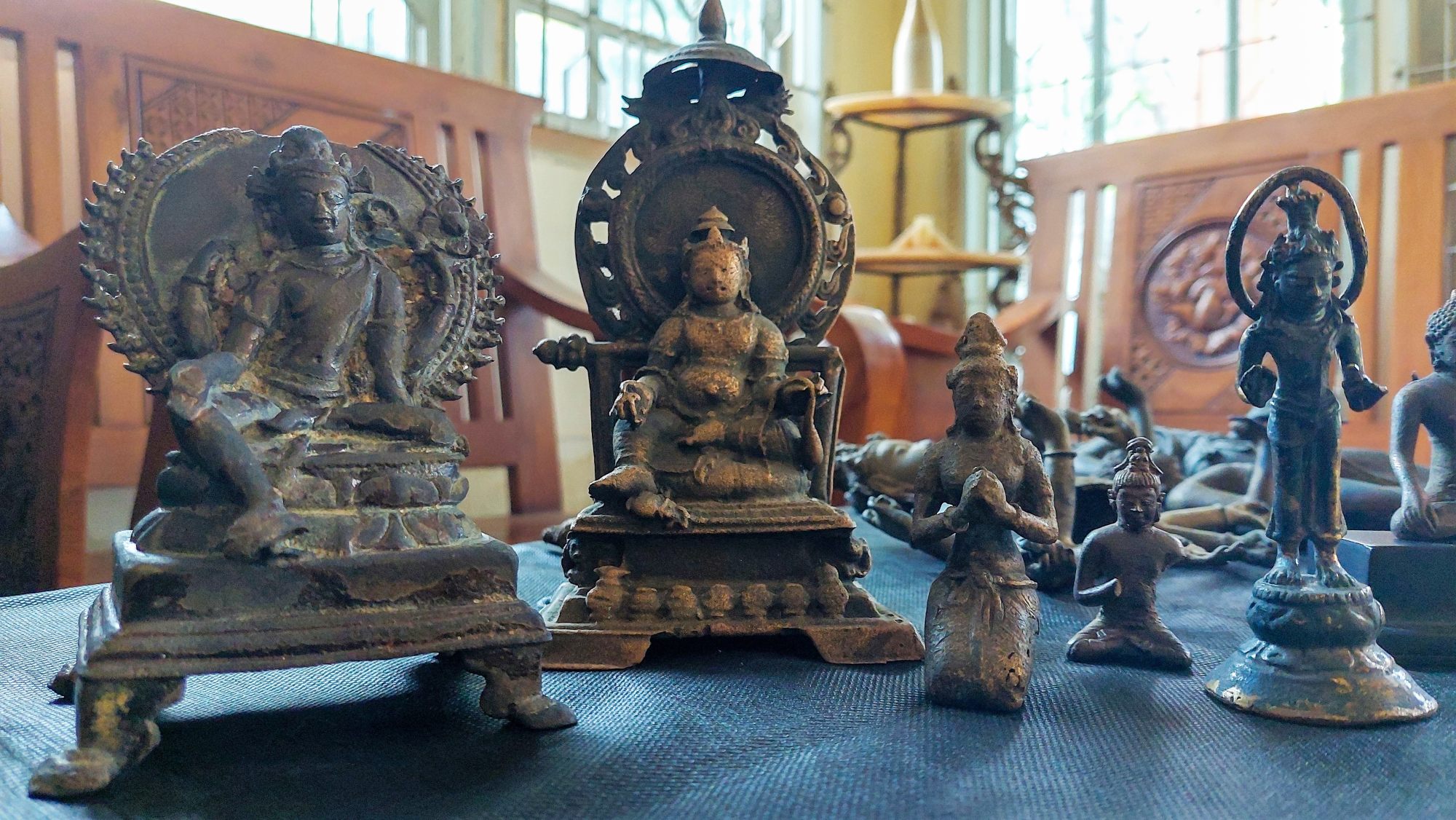
The Indonesians diving for gold from the ancient Sriwijaya Kingdom
- Palembang is believed to be the modern centre of what was once the Sriwijaya Kingdom – a Malay Buddhist empire in the 7th to the 12th century
- Relics ranging from Chinese coins to bronze statues to ceramics have been found in the Musi River
Budiman pulls off his oxygen mask and gulps for air as he surfaces from the water, stretching out his hand to Badarudin, who is waiting on the boat.
From his back pocket, Budiman retrieves a sharp metal object that resembles a spear blade. It’s about 30 centimetres long, with a broken wooden base.
The spearhead is the most interesting object Budiman has found during his two-hour dive in Indonesia’s Musi River. The others are mostly pieces of ceramics which will sell cheaply at the Cinde Weekly Market in Palembang, South Sumatra Province.
Budiman has yet to find any gold.

Palembang, Indonesia’s oldest city established some 1,300 years ago, is believed to be the modern centre of what was once the Sriwijaya Kingdom – a vast Buddhist empire which dominated parts of the Malay Archipelago from the 7th to the 12th century and was known for its maritime economy and trade routes.
The 750km Musi River bisects the city, and the treasures found deep within its waters are thought to be relics from the kingdom.
Over the years, artefacts linked to Sriwijaya have included the remains of the Kedukan Bukit Inscription – a stone inscribed with Pallava script that dates back to the year 683 – as well as a wealth of treasures, including statues, jewellery, beads, and gold and bronze items.
Diving started in the 1970s, when people would look for scrap wood and metal that had fallen from passing cargo ships. Seemingly ancient items have always been found on the riverbed, but residents did not realise they had any value and so they were not widely collected or resold.
When the wood and scrap metal ran out, people living on the riverbank turned to sand mining. As more artefacts were found however, the goal turned into finding ancient objects to sell, said Retno Purwanti from the South Sumatra Archaeological Center.
“The discovery of ancient objects in the Musi River did not just happen in the last five years; it has been [going on for] decades,” the archaeologist said. “It also needs to be emphasised that the ancient objects found from the Musi River are not necessarily relics of the Sriwijaya Kingdom.”

Going for gold
Most divers looking for treasure come from Kemaro Island, a small delta northeast of Palembang.
Hamid, 58, is among the older residents who still works as a treasure hunter. In the past, he was able to dive for up to two hours, but age has forced him to become a mentor for young divers. Budiman is Hamid’s sixth child.
“Diving is usually a family profession. Two of my children are divers. I only guide and help from the boat now,” Hamid said.

Budiman, or Budi as he is better known, says he has to keep fit to dive every day. Armed with a thick rubbing oil that keeps the body warm, he can dive for up to two hours, but the Musi River tests him daily.
Only a hose that connects a compressor engine to his mask keeps him alive. There is zero visibility; the Musi’s muddy waters mean he is surrounded by darkness. Budi visualises the area by feeling his surroundings. Often, his feet are pierced by rocks or rubbish scattered on the riverbed.
“If you have a runny nose you can’t dive. It’s very cold down below,” he said. “When I can’t stand the cold any more, I grab the rope that is connected to the ship and pull it three times. That’s the code for them to turn off the engine and pull me onto the boat.”

The easiest thing for treasure hunters to find in the Musi River is gold dust. They use a pump to suck up sand from the riverbed, then immerse the collection in mercury water to separate out the gold powder, which is later sold to a dealer.
One gram of gold is currently valued at 500,000 rupiah (US$35).
“In a month you can usually earn between 3-5 million rupiah from selling the gold powder,” said Adi, another diver.
The minimum wage in Palembang is 3.27 million rupiah per month.

Objects often found by divers include ceramics such as bowls, plates or earthenware. Fragments of ceramic goods are usually valued at around 50,000-100,000 rupiah and are usually sold at the local market, but ceramic items found intact can be very valuable. The most expensive can command up to 10 million rupiah depending on the estimated age and rarity.
Colourful beads and ancient Chinese coins can also be found in the river.
Anything made of gold commands a high value. A gold ring with a Buddhist symbol has been the pride and joy of diver and boat owner Wisnu, and he has taken good care of it since he found it in 2018.
“It would be a shame to sell it, but if someone offers me a good price I might let it go,” he says cheerfully.

So lucrative is diving, university graduate Asmadi decided to quit his job to dive full-time in 2018. The 26-year-old has a large collection of antiques, mostly made up of gold and bronze pieces.
“I stopped working after I felt that selling ancient artefacts was a better career,” said Asmadi, a graduate of Stisipol Candradimuka University in Palembang, where he studied State Administration.
Some of the items he has found include ancient Chinese coins from the Song to Yuan dynasties, as well as ceramics, gold beads, rings, bracelets, necklaces and bronze statues. At the end of 2019, he retired as a diver to focus on collecting antiques.

The real deal?
Although the number of artefacts to be found in the Musi River has diminished over the years, residents are still able to support their families by diving every day, especially if they discover valuable big-ticket items.
But according to archaeologist Retno, the dwindling number of antiques have led some to falsely claim their finds are relics of the Sriwijaya Kingdom.
It doesn’t help that the process to examine an antique is expensive and riddled with challenges. It needs to be examined in a laboratory and samples must be taken which will damage the object, Retno said.
“If an item is made of gold, there is no special marker we can look for. Ceramics, beads, or currency like ancient coins are more identifiable. Even then, we can’t immediately claim they date from the Sriwijaya era, even if it looks that way. We still have to be careful,” she said.
“Metal, whatever its form – gold, bronze, silver – can be reproduced very easily,” she cautioned. “Items can be made, sunk in the Musi River and then lifted again as if they were found there.”

Research on ancient objects found in water also tends to be more difficult, Retno said. For discoveries on land, the age of an artefact can be determined from the soil layers at the discovery site, but submerged objects cannot be measured in the same way.
“Foreign researchers have said that Sriwijaya is the ‘Island of Gold’, and always mention Sinbad’s story, which is fiction,” Retno said. “They just tell fairy stories.”
This has not stopped international interest in the Musi River, with some people identifying objects such as metal rings decorated with gems as coming from Sriwijaya.
“According to our research, rings from the Sriwijaya and Majapahit Kingdoms in Indonesia rarely used gems,” Retno said. “Usually they were engraved with religious symbols instead.”
As a result, Retno says foreign publications about Sriwijaya should not be considered scientific journals on the topic, as many do not include reference sources and use unclear research methods.
“There have been no significant findings for the past five years,” she said.


